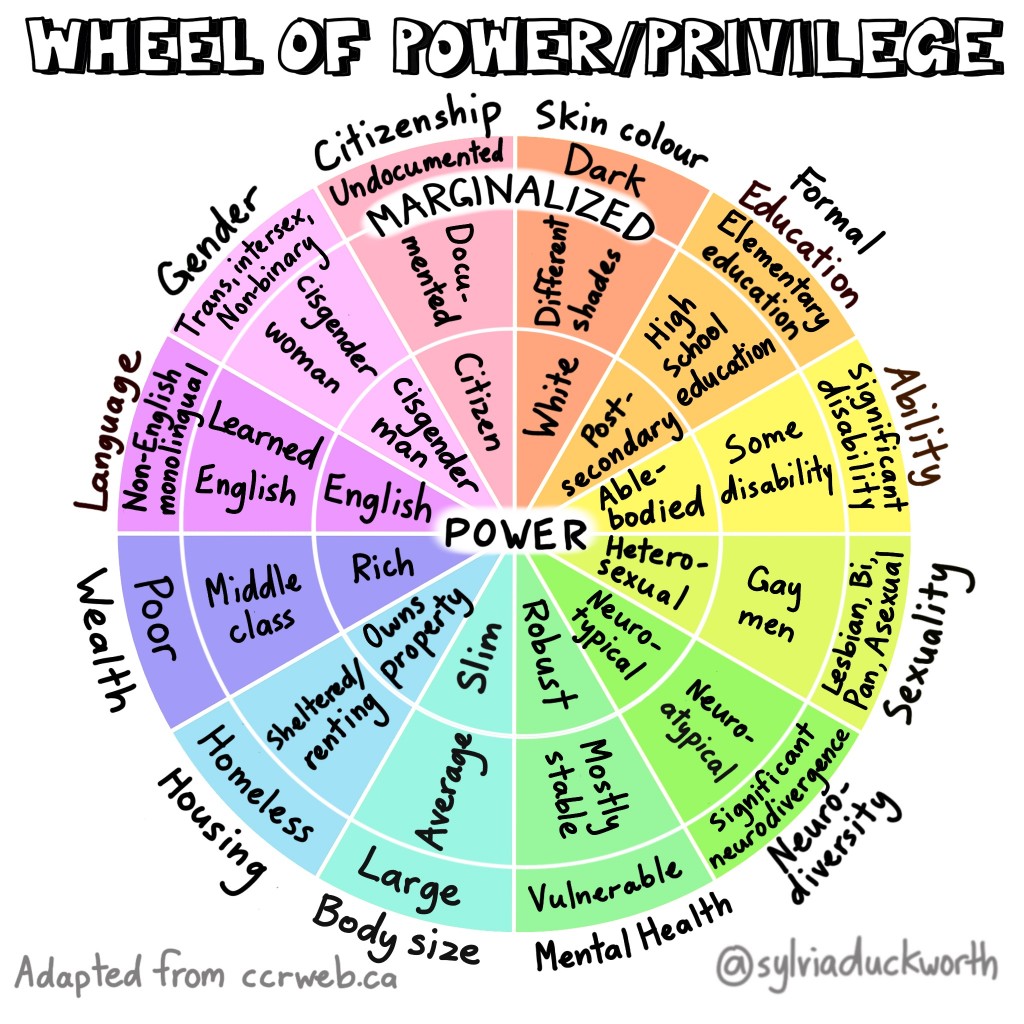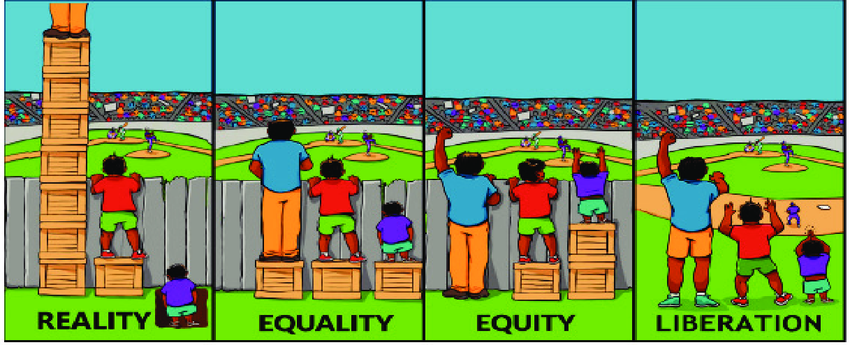What is privilege?
Privilege refers to a right or exemption from liability or duty, granted as a special benefit or advantage.
What is power?
Power, in this context, refers to the capacity to exercise control over others, deciding what is best for them, deciding who will have access to or denial from resources.
The following terms are those we use to define social groups that society has afforded more or less power (more/less access):
- Marginalized/Oppressed/Disadvantaged: Social groups with less power/less access/less privilege; social groups that have been disenfranchised, invisibilized, dehumanized, and exploited.
- Dominant/Privileged/Advantaged: Social groups with more power/more access/more privilege; social groups that have the ability navigate the world without consequence, due to unearned advantages at the expense of folks who are marginalized.
How does power and privilege impact me?
There are a few things to keep in mind when it comes to understanding power and privilege.
- Privilege is interconnected with power in our society, i.e., those who have privilege can create/maintain societal norms, often to their benefit and at the expense of others.
- Privilege does not mean that a person has not experienced struggles or that their life has not been difficult.
- Privilege does not mean that you did not work hard for the things you have.
- Privilege is fluid; it can change as you move through life.
- Privilege is contextual; identities you hold can give you an advantage or a disadvantage based upon how people perceive you.
- Privilege has strategically been set up as a “taboo” subject, allowing those in dominant groups to ignore embedded, and often invisible, forms of oppression.
When we say someone has privilege, we want their accessibility to resources to come to mind first. Those in power generally have unearned access to resources to which those not in power (typically members of marginalized groups) have no access. This notion of unearned access is where the inequity lies, because access is based upon an identity someone holds that has traditionally been associated with power.

Image Citation: Duckworth, S. (2020, Oct 18). Wheel of power/privilege [Infographic]. Flickr. https://flic.kr/p/2jWxeGG. CC BY-NC-ND 2.0.
To put this in perspective, let's look at White privilege. People who are White have unearned access to resources that work in their favor as opposed to people of color, who experience a multitude of barriers to gain access to the same resources. These barriers, rooted in historical inequity, include systems, policies and laws that disenfranchise people of color. White people are not forced to question their behaviors because the system is set up to afford them that luxury. For example, a White child is not often taught how to interact with authority figures, like police, whereas, for significant safety reasons, a child of color must be.
Bottom line—if you do not have to think about it, most often, it is because of privilege.
We want to highlight that intersectionality plays an important role in understanding how power and privilege interact to create oppressive systems. Click here to watch a video on Power, Privilege and Oppression.
What is the difference between equality and equity?
Often people use the terms “equality” and “equity” interchangeably because there is a misconception that the terms share the same meaning. However, even though they sound similar, they do not have the same meaning and they cannot be used interchangeably.
A metaphor often used is equality ensures that everyone has a pair of shoes; equity ensures that everyone has a pair of shoes that fit. The graphic below is a visual metaphor depicting the differences between equality and equity, but also it expands to include reality (how inequitable our system is), and the need for liberation (removing the “fence” or oppressive system all together). With both metaphors, cultural context and systematic barriers to which marginalized persons are subjected are not considered; these concepts are bigger than having shoes that fit or breaking down a fence.

Image Citation: Lynch, Shrehan & Sutherland, Sue & Walton-Fisette, Jennifer. (2020). The A-Z of Social Justice Physical Education: Part 1. Journal of Physical Education, Recreation & Dance. 91. 10.1080/07303084.2020.1724500.
The critical difference is...
Imperative to understanding the means required to remove the oppressive barriers marginalized persons experience. More resources, more critical understanding of power and privilege, and more commitment to systematic changes are necessary to achieve true fairness and justice for all. Only then can we achieve true equity.
Additional Resources & Reading
- 7 Reasons Why “Colorblindness” Contributes to Racism Instead of Solving It
- Canadian Centre for Diversity and Inclusion: Exploring My Power and Privilege
- Colorblind Ideology Is A Form of Racism
- Here is the Problem with “All Lives Matter”
- How to Be an Antiracist by Ibram X. Kendi
- Scripps College: Power, Privilege, and Oppression Presentation
- The MSW@USC Diversity Toolkit: A Guide to Discussing Identity, Power, and Privilege
- The Sum of Us: What Racism Costs Everyone and How We Can Prosper Together by Heather McGhee
- University of the Sunshine Coast: Race, Power, and Privilege General Information Folio
- White Fragility: Why It's So Hard for White People to Talk About Racism by Robin DiAngelo



